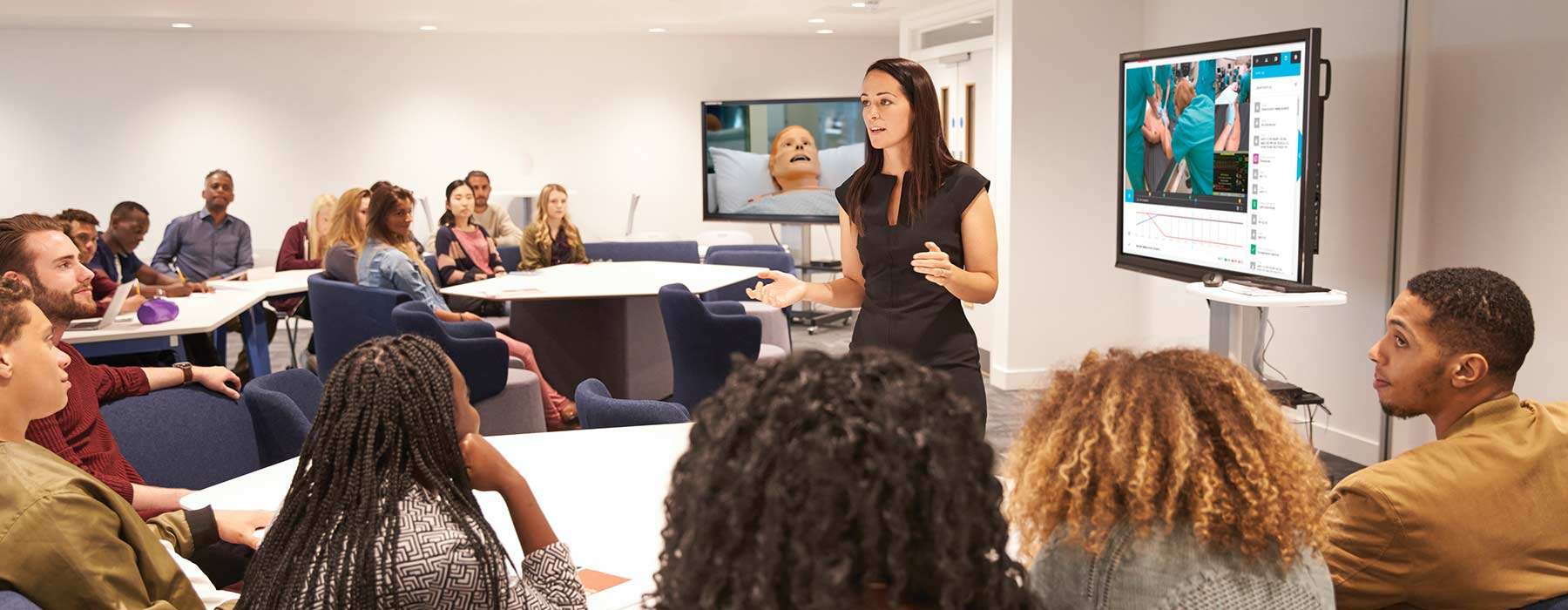Master Debriefing with the DASH Tool
Leverage this resource to develop and assess debriefing skills.

Leverage this resource to develop and assess debriefing skills.

Are you confident that you and your team are maximizing learning outcomes with your simulation debriefings?
Debriefing has been described as the "heart and soul" of the simulation experience.1 Some studies have shown that without effective debriefing, learning won’t occur.2 And, research also indicates that ineffective debriefing results in persistent poor clinical judgment.3 This means that the competence level of the debriefer has a considerable influence on learning outcomes.4
Debriefing’s ability to "make or break" a simulation makes it a natural choice for one of the top spots on the professional development list.
If you’re uncertain of how your team’s debriefing skills stack up, or if you’re unsure of what specific behaviors make a debriefing most effective, there are a number of expert evaluation tools that have been used in simulation research and can help you answer both of these questions.
In this article, we focus on one of these tools – the Debriefing Assessment for Simulation in Healthcare© (DASH) – and discuss how it can help you maximize learning outcomes by conducting expert debriefings.
The Healthcare Simulation Standards of Best Practice™, developed by the International Nursing Association for Clinical Simulation and Learning (INACSL), provide guidelines on what constitutes effective debriefing.
According to INACSL's "Debriefing Process" Standard, debriefings should be:5
These criteria provide useful guidance for simulation programs to work toward. But many simulationists struggle with pinpointing the specific behaviors necessary to meet best practice standards.6
This is precisely where the DASH tool can help.

Developed by an expert group of simulation educators at the Center for Medical Simulation in Boston, MA, the DASH tool is a free resource designed to assist in the evaluation and development of debriefing skills. The tool accomplishes this by examining concrete behaviors.
Essentially, the DASH helps by translating debriefing best practices into a set of observable actions. Having concrete behaviors to aim for is an important component of the deliberate practice necessary to master a skill.7
The DASH assesses debriefing performance in six elements. Performance in each element is rated on a 7-point scale, from extremely ineffective/detrimental (1) to extremely effective/outstanding (7).
1. Setting the stage for an engaging learning experience (prebriefing), including:
Explaining the strengths and weaknesses of the simulation and what the learners could do to get the most out of it
Stimulating the learners to share their thoughts and questions about the upcoming simulation and reassuring them that they wouldn’t be shamed or humiliated in the process
2. Maintaining an engaging context for learning, including:
Showing respect towards the participants
Ensuring the focus is on learning and not on making learners feel bad about making mistakes
3. Structuring the debriefing in an organized way, including:
Guiding the conversation in way that it progresses logically rather than jumping around from point to point
Helping tie observations together and relate the case(s) to ways the learners can improve their future clinical practice
4. Provoking in-depth discussion that lead learners to reflect on their performance, including:
Using concrete examples to get learners to think about their performance
Using video or recorded data to support analysis and learning
5. Identifying what learners did well or poorly – and why, including:
Providing concrete feedback to participants on their performance based on accurate statements of fact and debriefer's point of view
Helping explore what participants were thinking or trying to accomplish at key moments
6. Helping learners see how to improve or sustain good performance, including:
Helping learners learn how to improve weak areas or repeat good performance
Being knowledgeable and using that knowledge to help learners see how to perform well in the future
The actions covered in the DASH can provide you and your team with a clear pathway to conducting optimal debriefings.

Together, these versions can allow you to get a well-rounded assessment of performance from multiple perspectives.

Some examples of areas where the DASH can help include:
Tip: If you usually collect your assessment data using paper and pencil or Excel file, it may be worth exploring software that will make it easier to track the success of your debriefing professional development efforts. In addition to managing student performance data, a simulation management system like SimCapture can also help you collect and organize meaningful data on your faculty’s debriefing progress. The DASH can be completed directly within SimCapture, yielding performance reports that provide insights into specific areas that need further development. And, the ability to track performance over time will help you see if any improvement measures you’ve taken are having an impact.
Access the DASH tool from the Center for Medical Simulation.
Please note that this article is not an endorsement of the DASH tool. It is intended to provide an overview of the DASH, which is only one of several instruments that can help you effectively assess debriefing quality. Click here for INACSL’s repository of instruments used to evaluate debriefing methods, scales, and experiences used in simulation research.
